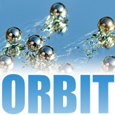Love Food, Hate Waste - Simultaenous Equations
Lesson idea. A lesson activity to explore Simultaneous Equations using data from a website seemingly unrelated to mathematics
Teaching approach. Using a source that was not intended by its creators as a mathematical resource, pupils are introduced to informal ways of solving simultaneous equations. The lesson starts with an intriguing ‘hook’, pupils are able to use reasoning(ta) skills to find an answer to the problem and can then, later, formalise this in an algebraic context, using their informal work to support the transition to mathematical thinking(ta). whole class(ta) work supports this inquiry(ta) into the data provided. Using a resource not targeted at mathematics specifically encourages pupils to think about maths outside of the classroom. (edit)
| Resource details | |
| Title | Love Food, Hate Waste - Simultaneous Equations |
| Topic | [[Topics/Simultaneous Equations|Simultaneous Equations]] |
| Teaching approach | [[Teaching Approaches/Whole class|Whole class]], [[Teaching Approaches/Mathematical thinking|Mathematical thinking]], [[Teaching Approaches/Inquiry|Inquiry]], [[Teaching Approaches/Reasoning|Reasoning]] |
| Learning Objectives | By the end of the lesson pupils should be able to:
|
| Format / structure | activity below, with website. |
| Subject | [[Resources/Maths|Maths]] |
| Age of students / grade | [[Resources/Secondary|Secondary]], [[Resources/KS4|KS4]], [[Resources/KS3|KS3]]
|
| Useful information | You'll need to be able to project a website to display data. An IWB might also be useful.
|
| Files and resources to view and download | A freely available, UK website is used. www.lovefoodhatewaste.com used in the activity (below).
|
Pedagogical rationale:
Using a source that was not intended by its creators as a mathematical resource, pupils are introduced to informal ways of solving simultaneous equations.
The lesson starts with an intriguing ‘hook’, pupils are able to use problem-solving skills to find an answer to the problem and can then, later, formalise this in an algebraic context, using their informal work to support the transition.
Learning Objectives:
By the end of the lesson pupils should be able to:
- Solve simultaneous equations presented in a context (rather than merely with algebra), featuring positive integers
Introduction:
Go to the website www.lovefoodhatewaste.com and project it for the pupils. Explain that it is a genuine, government-funded website, designed to help people who find at the end of a meal that they have food left over!
One suggestion that they make is to cook less food next time and to help with this they provide advice about portion sizes.
Once the site has loaded, go to the section labelled “Perfect Portions”. Select the food ‘potatoes’ and then click on the plates to feed 3 adults and 2 children. The site explains that “21 small potatoes” are required. [The important question about the exact size of a ‘small’ potato is, alas, left unanswered!] It may be useful to take a screenshot of this to keep a record on the IWB.
Then repeat the process for 5 adults and 4 children to discover that “37 small potatoes” are needed. A screenshot might again be useful.
Ask the pupils what we can work out. They may want to discover how many potatoes are needed for each adult and how many for each child. Some may use trial and improvement, while others may spot that if they double the first set of results (giving 42 potatoes to feed 6 adults and 4 children) they can make use of the difference between this and the second set of results to determine that each adult is deemed to need 5 potatoes. They can then find that children require 3 each.
Discuss what made this easy to solve: that we managed to get the same number of children involved in both situations. If we can do this by multiplying one or both of the scenarios then we can work out the number required for an adult and for a child. #
Pupils can then choose a food and a number of people to feed and can then create a new problem for the class to solve.
Some pupils may realise that there is an easier way of divining the answer, namely to select ‘1 adult’ and subsequently ‘1 child’, but this is clearly no fun! This is, though, a way to check the pupils’ answers.
Pupil work
Pupils can then either be given another couple to problems to solve on the board, or can work at their own computers to create a problem and can then solve it.
Extension
Earlier (at #) an important caveat was missed (deliberately). Pupils could be challenged to find a pair of scenarios from which the answer cannot be calculated. For example, if one scenario is a multiple of the other, or if only adults are used, then we can’t work out the single solution.
Bridging
Later, the scenarios can be written using algebra and the technique of multiplying one or both of the scenarios (equations) is still valid.
Drawbacks
The website only provides situations where the solutions are positive, and the numbers in the equations are all positive too.


